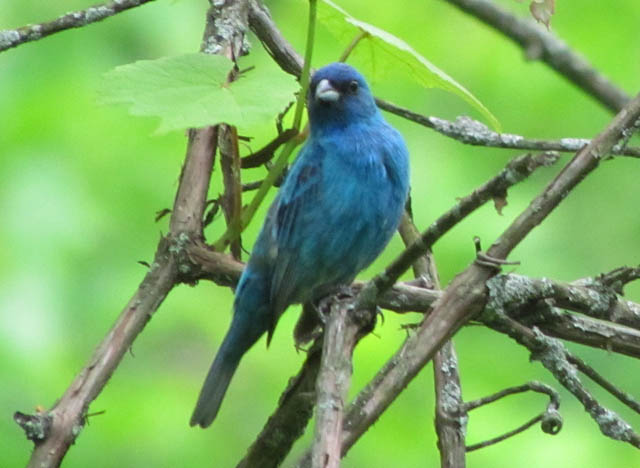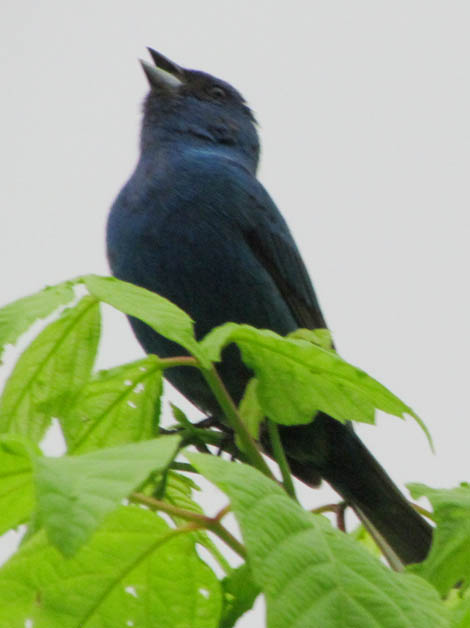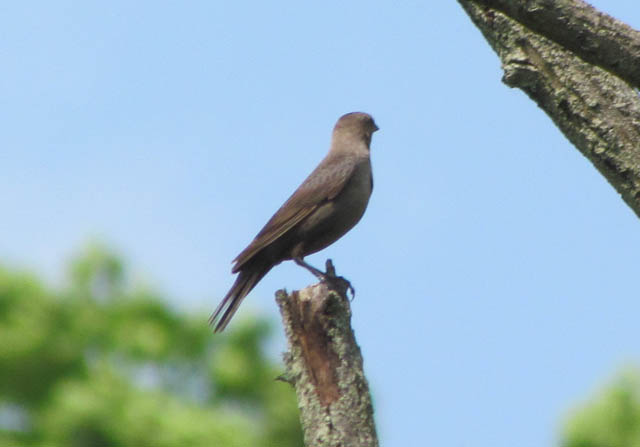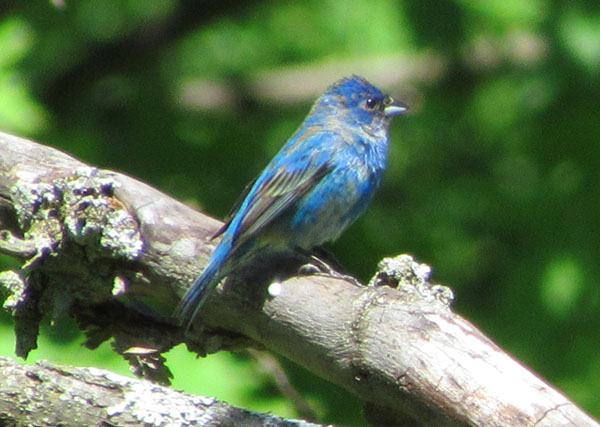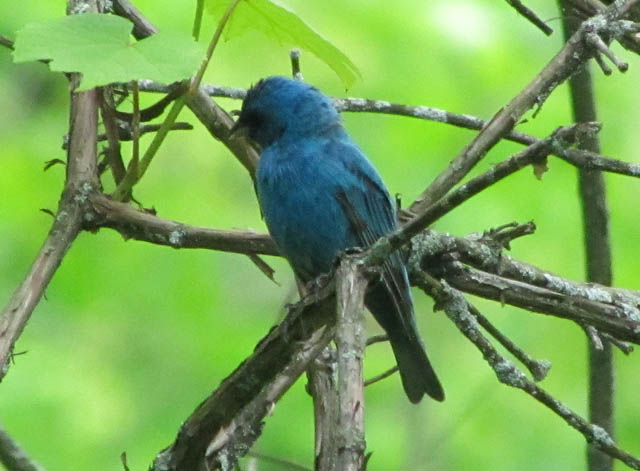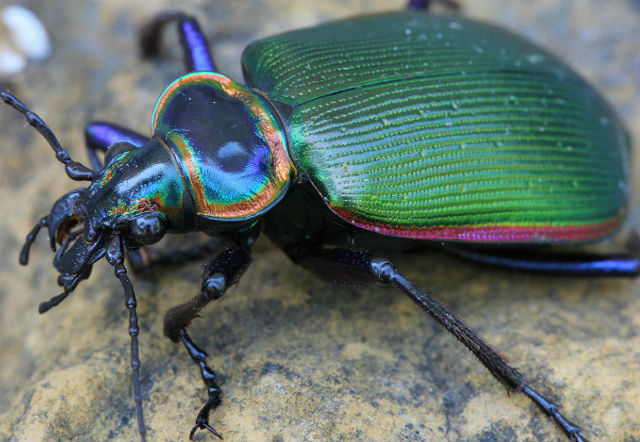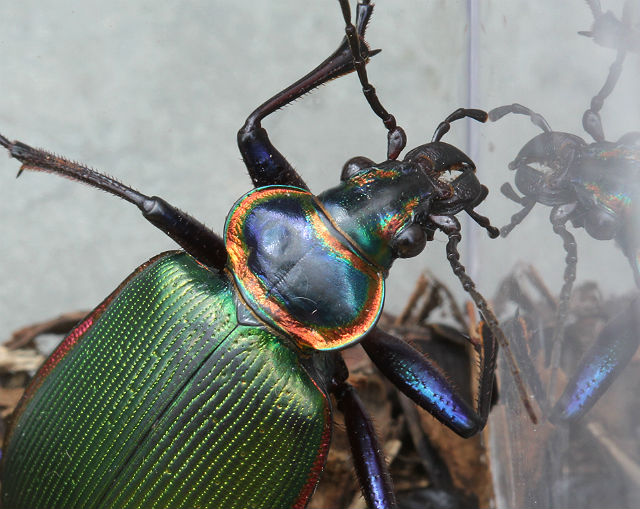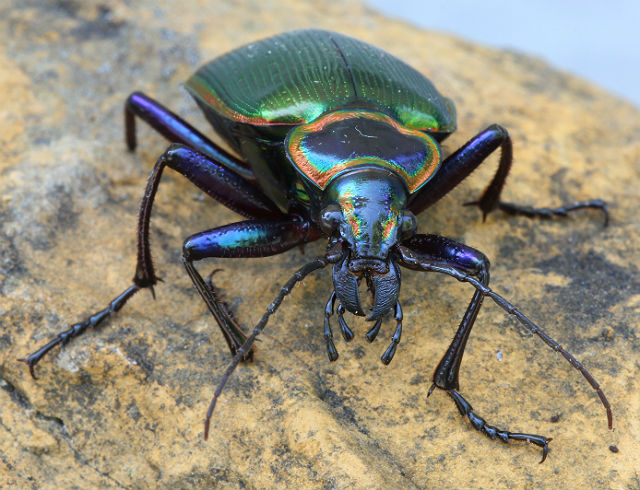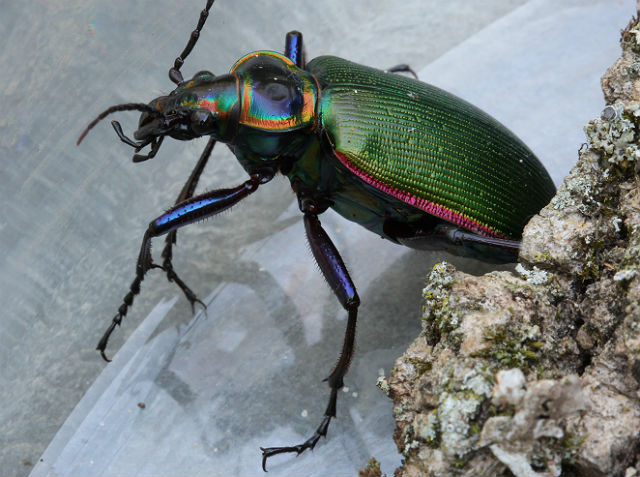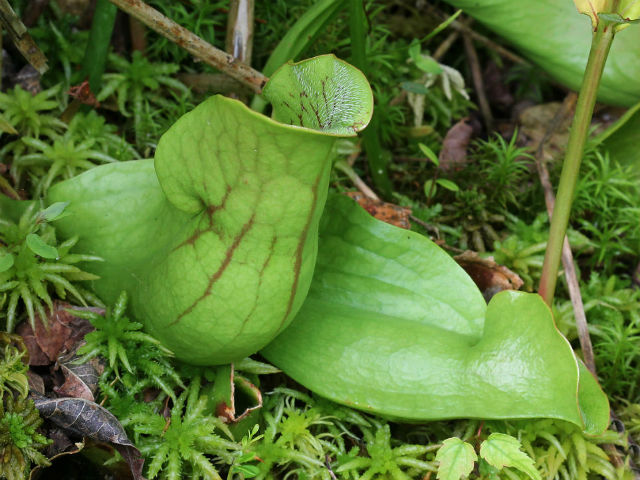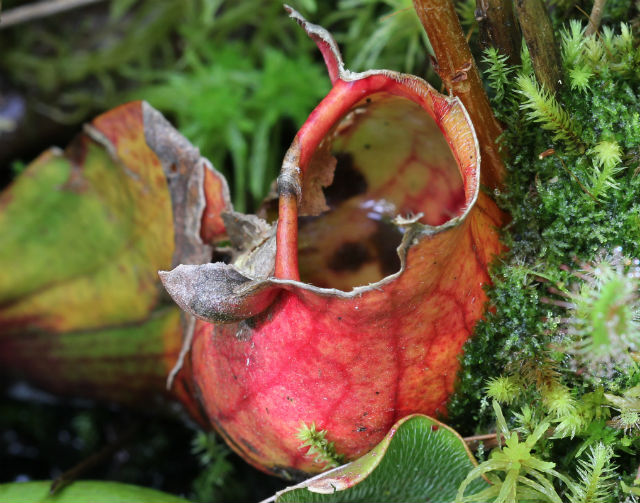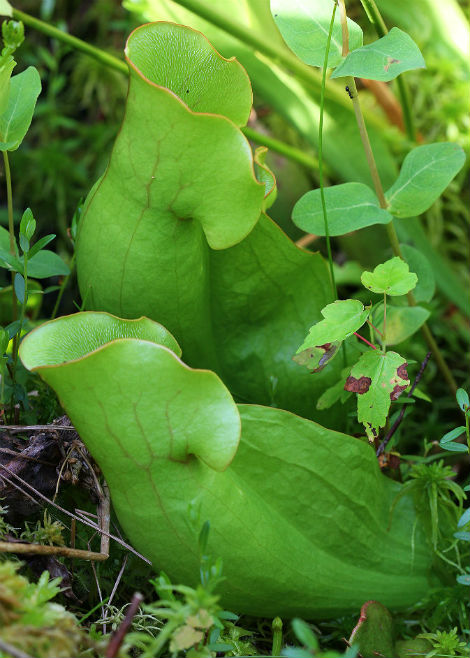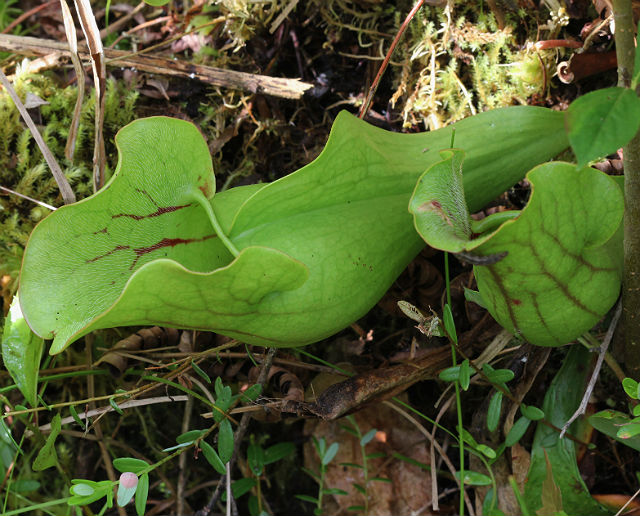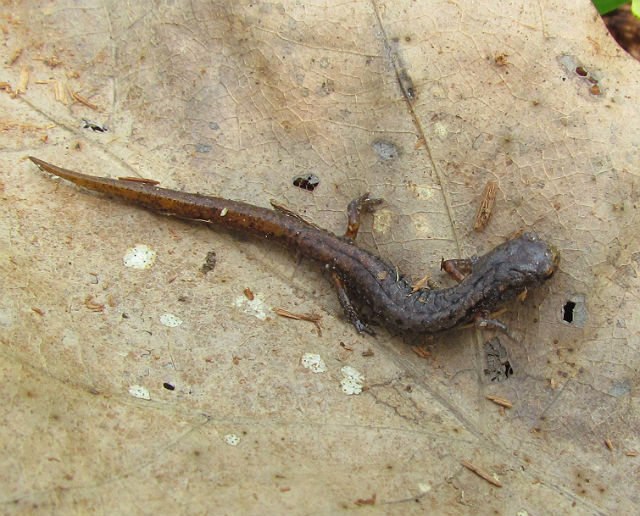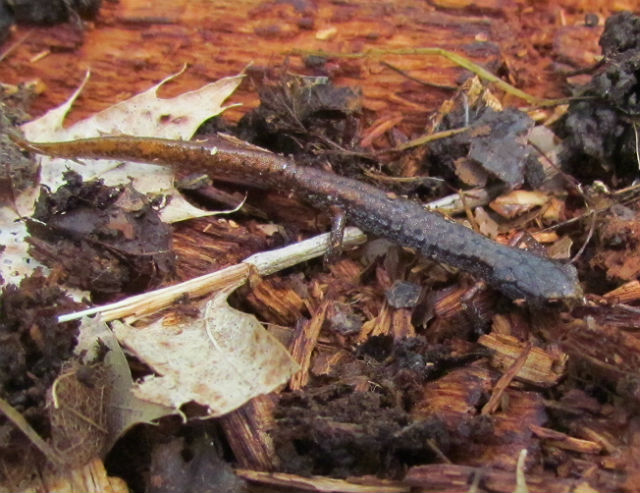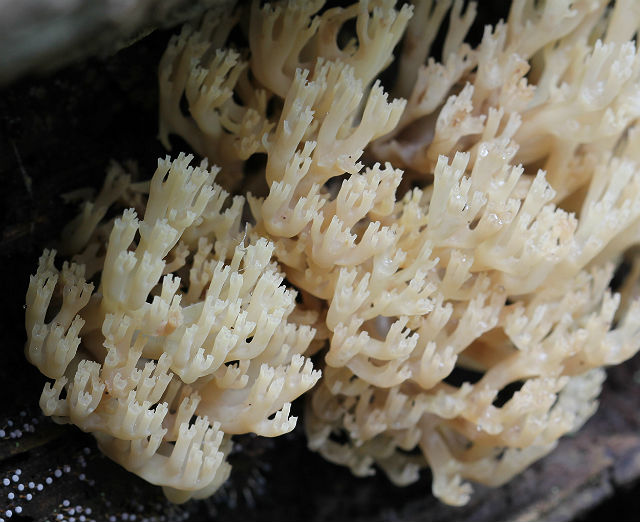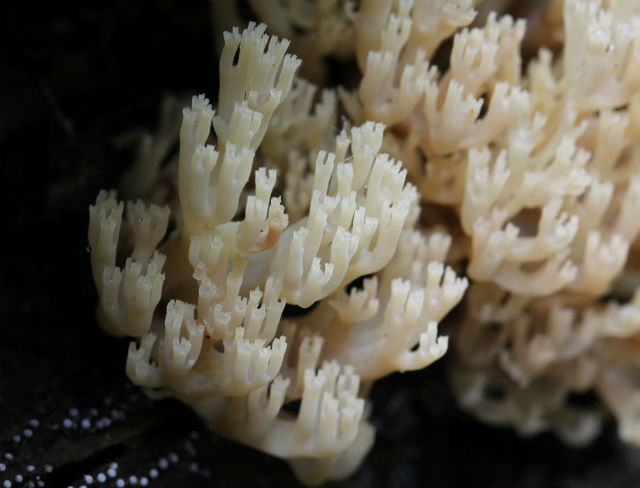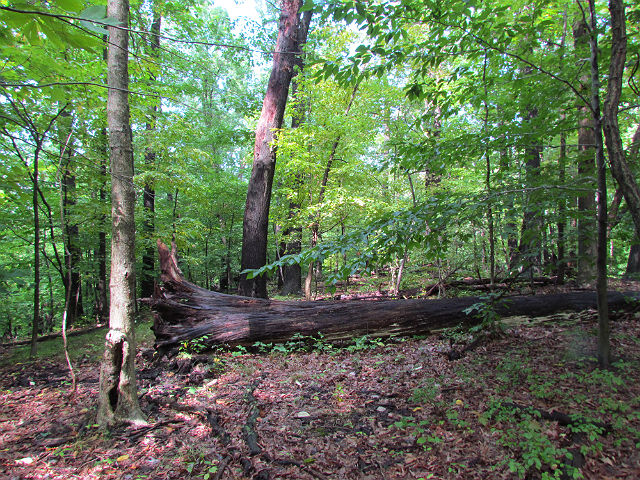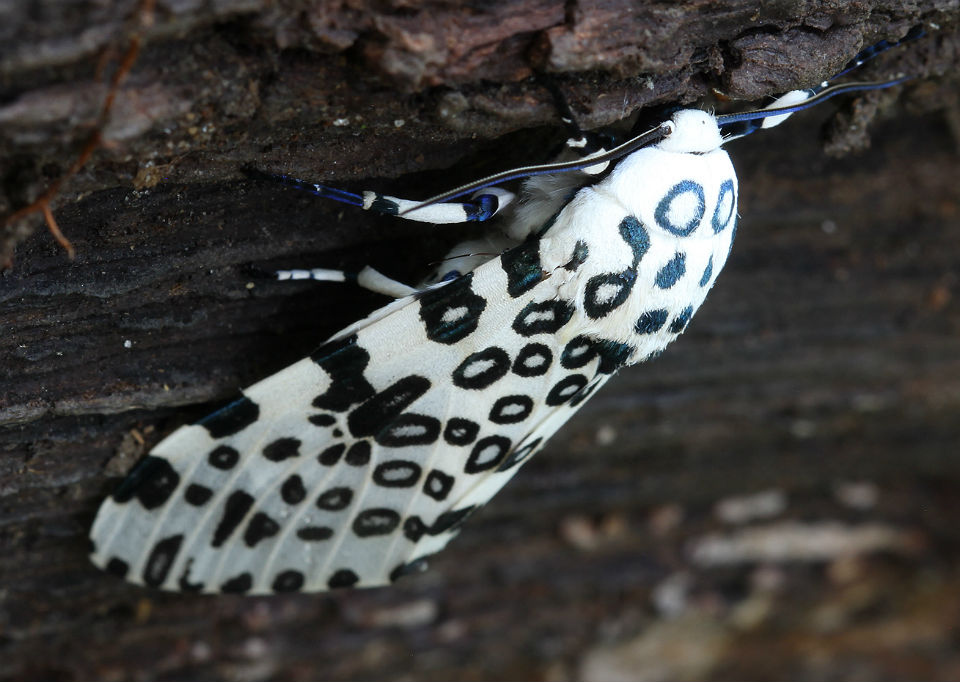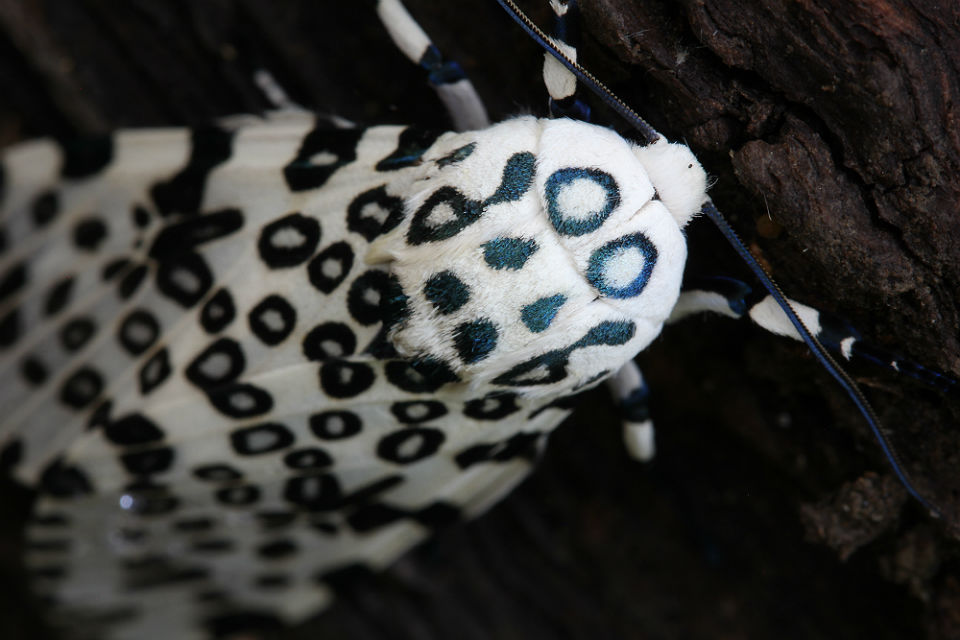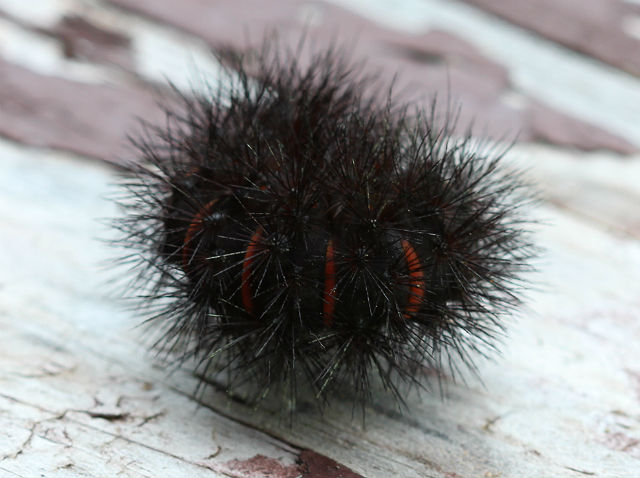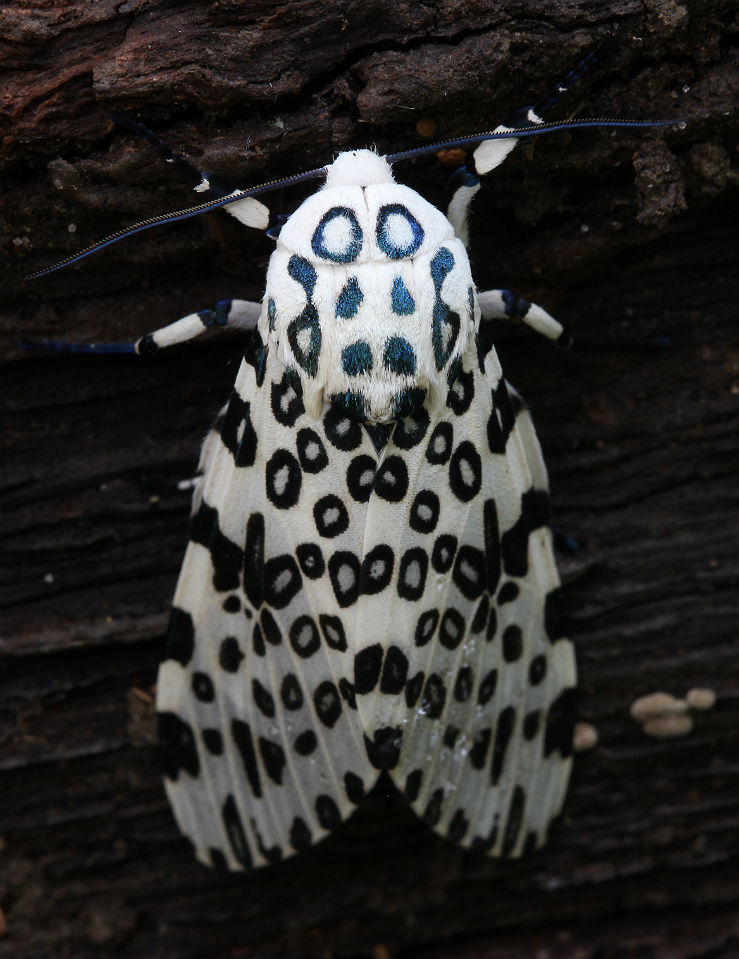The sparrow-sized, brilliant turquoise blue, male Indigo Bunting is one of the most eye-catching birds around.
Indigo Buntings have no blue pigment; they are actually black, but the diffraction of light through the structure of the feathers makes them appear blue.
Male Indigo Buntings sing from treetops, shrubs, and telephone lines all summer. They favor brushy pastures and edge habitat where fields meet the forest.
As with many birds, the adult female has less spectacular coloration and is mostly brown. In both sexes, the upper beak is dark contrasting with a whitish lower beak.
These birds perform a valuable service to man by consuming grasshoppers, cankerworms, flies, mosquitoes, weevils and other insect pests. Their diet also includes fruit and seeds.
The sights and sounds of Indigo Buntings are a pretty good indication that Summer is in full swing.


